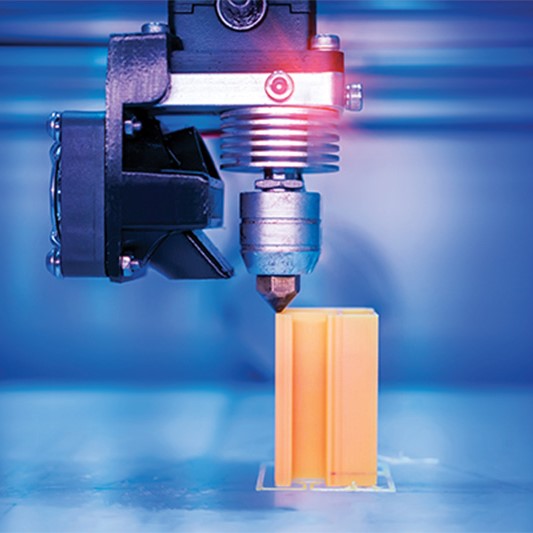3D printing, also known as additive manufacturing, is becoming more and more popular in the industrial field and the demand for parts produced with this technology is constantly growing thanks to the many advantages it can provide.
3D printing is not only synonymous with rapid prototyping, but also with the production of parts with complex geometries and it allows the creation of small series of certified and high-performance pieces. But the potential of this technology is even bigger and this is why Fluorten has decided to summarize its main strengths.
What are the 10 main pros of 3D Printing?
- Precision: Fluorten’s 3D printers, thanks to the Beltless System Roboze, allow the creation of pieces with high precision (equal to 0.025 mm);
- Repeatability: it is possible to replicate identical parts without limits and with the guarantee that the pre-set parameters are always respected. This allows, even after some time, to start a production with the certainty that all the parts obtained will comply with the customer's requests and needs;
- Fast Prototyping: 3D printers can produce parts in few hours. This speeds up the prototyping process and allows to complete each phase of the project more quickly;
- Complex geometries: the 3D printers available at Fluorten allow maximum design freedom and the production of parts with a more complex design than the ones obtainable with traditional production processes, for example, three-dimensional structures with undercuts or cavities;
- On-demand production of small series: 3D printing on demand is another advantage as it allows to reduce or even eliminate stock, with a consequent saving in terms of space and costs. All 3D design files are stored in a virtual library as they are printed using a 3D model, such as a CAD file, which means that components can be identified and printed when needed. Even changes to projects can be made quickly and at low cost;
- Large sizes: our 3D printers, developed and produced by Roboze, are designed to print on a large scale, with a work surface up to 500x500x500mm. In this way it is possible to create large parts or to produce components that can be assembled so as to have no limits in production;
- Waste reduction: additive manufacturing makes it possible to create parts using only the necessary material with a consequent saving in industrial production, not only in terms of resources but also in the cost of the materials used;
- Customization: each part can be designed and built differentiating it from the others without any incidence in terms of costs. This aspect greatly favors the production of prototypes, but also of parts specifically designed for a single application;
- Lightweight and resistant parts: in 3D printing, the most used material is plastic, in our case both base and high-performance polymers. This allows for parts that are lighter than their metal equivalents. This is particularly important in the automotive and aerospace industries where light weight is a central theme, as it allows for greater fuel efficiency and lower emissions;
- Materials: Fluorten manufactures technical items with both base polymers and high-performance polymers that guarantee thermal and mechanical resistance capable of replacing metal alloys in extreme applications (for example, CARBON PEEK, CARBON PA, PEEK, ULTEM ™ AM9085F, PP).
To further advantage, by having a modern CNC machining department inside, Fluorten can complete and refine the part, obtaining shapes and tolerances that 3D printing does not allow.
If you have special needs, Fluorten will find the right solution for you!
Contact our consultants: info@fluorten.com
Download our catalogue!

